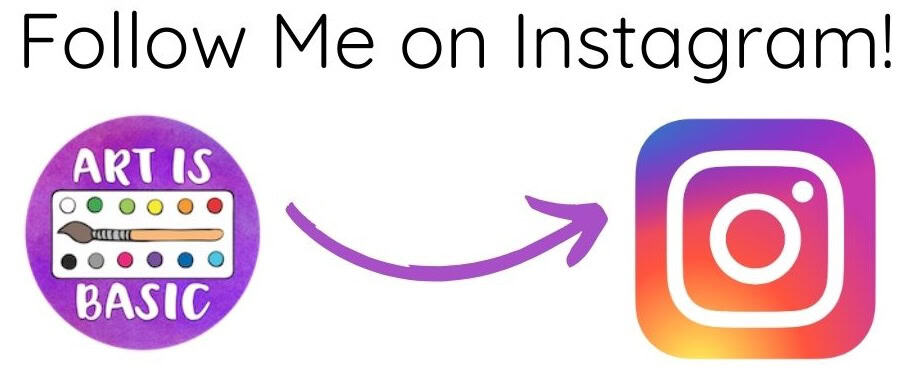Welcome to the 4th post in my series On Teaching Art.
The first post and the background behind this series is On Teaching Art: Art vs. Craft.
The second post was On Teaching Art #2: Organizing Curriculum.
The third post was On Teaching Art #3: Integrating Art with Other Subjects.
The question posed for this blog post is: “What are the important principles for teaching art that my students should remember? For instance, I can imagine that it’s important for them to expect finished products to look different from one another. Or that it’s important to try the art first before you ask students to do it,” asked Carrie Birmingham, a professor of education.
Both of those suggestions are very important, so I am adding them to my list. When creating this list, I imagine a new art teacher or someone who might be starting to teach art to their kids in a classroom, day camp or homeschool setting. Here are some of my top tips of things to think about when teaching an art lesson. I am continually adding to this list. These are the things I’m am thinking about while teaching and preparing lessons. I am by no means an expert and I would love to hear your ideas and add them to the list!
Preparation:
1. Prepare for a wide variety of skills and ability levels. Try to plan so you can encourage those who are more advanced (and ready to move beyond) yet still take into account those who have lower skills and knowledge of art, so they can be successful too.
2. How can you design projects so that the kids are challenged to step beyond what they have already done but are not too frustrated?
3. Plan materials ahead of time. (Cut paper, make sure you have the supplies you need, etc.). One time I was running low on paper mache so I combined the remaining powder with liquid starch (which I heard could be used instead of paper mache). It created the most AWFUL slimy, snotty goop ever. I can’t even explain to you what it looked like, but there was some gagging involved and I think I turned some kids off to paper mache forever. Moral of the story…. make sure you have enough supplies!
4. Try out the project first! It is so important to know what you are doing and what challenges your students might face.
5. Think about procedures. How will you distribute supplies? What specific steps do the kids need to take to clean up? Where will you store in progress art?
During the lesson:
6. Break the projects up into steps and give small demonstrations for the students to watch. The younger the kids are, the smaller the steps should be. For example, if I demonstrate an entire project from start to finish, the little kids may not remember how to start. My older students can remember more and have had much more experience, so fewer step-by-step directions are needed. Does that make sense?
7. Value the journey rather than the end product. In my opinion, art class should be more about the process, rather than the end result. What will the students learn? What will they experience? What skills will they develop? Although a nice-looking end result is fun too!
8. Be flexible. Don’t worry too much if kids have their own vision that is different from your original plan. Let them move in a different direction if it will still meet your learning objectives. This happens all the time in my class. My students have a lot of curiosity and are always coming up with new ways to do things.
9. Limit supplies at times. Sometimes when there are too many options it can be overwhelming for little kids and the focus is lost. By overwhelming, I mean they can spend more time picking out the perfect art supply than actually creating with what they have!
10. Watch the clock! I always allow 5 minutes for younger students to clean up and more time if we are using paint or clay. Older kids can sometimes clean up faster, but allow 5 minutes unless you know your students well.
11. The timing will be hard at first. Sometimes the kids will whip through projects and you expected them to last 3 class periods! Try to always have back-up plans (sketchbooks and still life materials?) in case you have extra time. Don’t be afraid to put a deadline on projects. Most kids will increase their pace to meet the deadline. Benchmarks are good on longer projects. I sometimes announce to the classes “By the end of this period, you should have your drawing sketched out. Next period we will start painting.” Most kids will have their pictures drawn if you lay out a timeline.
12. Remember overall it is about practicing, learning and exploring.
What do you think? Do you agree with what I’ve written? What else should be added to this list? What are some important things to think about when teaching an art lesson? I would love to have an ongoing list of suggestions from other art teachers.
Discover more from Art is Basic | Elementary Art Ideas
Subscribe to get the latest posts sent to your email.



























Great post, thanks! As a side note, if you ever run out of paper mâché again, just always keep flour and Elmer’s glue on hand. I only used homemade paper mâché in class: 2 cups flour, 1 cup Elmer’s glue, 1 cup floour. I’ve used this with lower and middle school and the results are beautiful AND it frees up money for other supplies I need. Try it!
Thanks for the suggestion! Was that one cup of water? I will keeep some flour on hand. At the time I only had the liquid starch in the room. 🙂